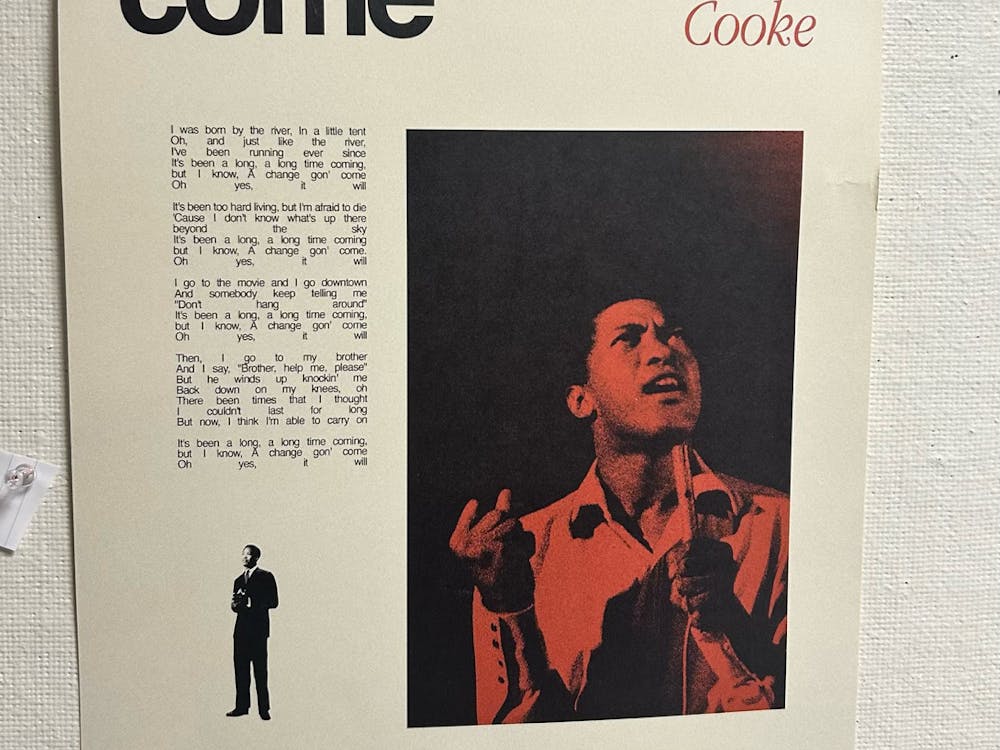TikTok, which started as a platform to share dance and lip-sync videos, has now become a hotbed for political and social movements, subcultures and ideologies — one of which is the “tradwife” movement. Tradwife videos often show conventionally attractive white women in picture-perfect homes (or aesthetically “messy” farmhouses) wearing ironed sundresses covered with an apron, tending to their brood of children, making food from scratch and speaking in a feminine lilt. These social media posts have spread like wildfire and have been utilized by the authoritarian right to push misogynistic narratives and legislation.
A tradwife, short for “traditional wife,” is a woman who subscribes to traditional gender roles and heterosexual marriages. Think of any 1950s media which portrays a perfectly manicured white woman dressed modestly, who is submissive to the men in her life and stays at home with the children. The tradwife movement has been around for years but has exploded into pop culture post-2020 — most likely as a response to the hyper-capitalistic “hustle” culture or “girlbossification” of mid-2010s feminism, which pushed for women to get jobs and climb the corporate ladder.
Before beginning, I would like to clarify that there is nothing wrong with a woman staying home with her children and/or participating in traditional gender roles and activities, such as cooking and cleaning for her husband. However, the performativity, unspoken consequences and weaponization of tradwife-ism — by the right — are where the real problems lie.
The first problem is the performativity. Most women on TikTok who fit into the tradwife category do not actually claim they are tradwives. TikTokers such as Hannah Neeleman (@ballerinafarm) and Nara Smith (@naraazizasmith) have never stated a connection to the movement, nor do they make any comments related to tradwife ideology. So, why are they always involved in the conversation when people speak about the movement? The answer is that it’s about the image they sell to the public — something impossible to replicate by the average woman.
Their husbands are often kept out of the picture, but Neeleman’s husband is the son of JetBlue founder David Neeleman, and Smith’s husband is Lucky Blue Smith, a model and actor. These women, especially Neeleman, create a humble image of themselves for everyday women to aspire to, but are anything but humble in their backgrounds. They make money off women who want to replicate their lifestyle yet they never talk about the privileges that got them there in the first place. With the death of the single-income household due to price inflation, staying home with the children is out of the question for most families. Therefore, these women consume this tradwife media aspirationally and are never told about the behind-the-scenes of what makes these tradwives’ lives possible.
Additionally, these tradwives sell an unrealistic expectation of labor. It comes as no surprise that they’re happy doing domestic labor with no help from their husbands when they’re profiting off their videos about domestic labor and it’s valued like a job — unlike everyday women who often complete domestic labor for no pay (on top of their waged jobs) and also don’t get help from their husbands.
TikTok pays influencers between 2 and 4 cents per 1,000 views on a video, and these women regularly pull over a million views on their videos, with Nara Smith regularly having over 10 million. This averages easily $400 per video. Additionally, many of these influencers clean their entire houses daily and make food from scratch, which would usually take all day to make, but they make it seem like it only takes a few minutes.
Smith tags every one of her cooking videos with #EasyRecipe, which contradicts the content of her making grilled cheese for her three children from scratch: bread, cheese, pesto — everything from scratch — just for lunch. This encapsulates the performativity problem with these women. They make it seem realistic to devote this much time to domestic labor and make women feel bad about their own lives. By doing so, they create a perfect loyal consumer base of women who want to consume content of the life they aspire to have. The problem with these influencers is not that they’re rich; the problem is that they put on and market a wholly unrealistic façade.
Their paid labor contributes to my second contention with tradwife influencers: They do not talk about the consequences of being a stay-at-home mother. Self-proclaimed tradwives such as Gwen the Milkmaid or Estee Williams speak about how fulfilling it is being a housewife, yet they forget why feminism came about in the first place.
Women weren’t allowed to open a credit card under their own names until 1974 and were at the financial mercy of their husbands. If their husband was abusive or divorced them, they had no savings of their own to support themselves or their children. With only 14.6% of women having a bachelor's degree or higher in 1974 and 26.7% having less than a high school degree, they had little education to fall back on if they could no longer rely on their husband’s financial support. The virtues of feminism know no bounds. Yet, these women are proclaiming that tradwifeism is the best way and explicitly denounce feminism when the movement gave them the choice to stay at home rather than being forced to.
Many former tradwives are speaking about their experiences of marrying straight out of high school, having no work experience and going straight into having children. When their husbands leave them, they have nowhere to go. This is the true danger of these tradwife influencers: They sell an unrealistic expectation and image of women while failing to mention how much financial support they have in case they need it. They espouse right-wing ideology while forgetting feminism is what gave them a voice — and the possibility to earn money while using it.
This right-wing ideology is also why the tradwife movement is so detrimental to the future of women’s rights in the U.S. and abroad. The tradwife movement has deep roots in Nazism, anti-feminism, anti-college and fundamental Christian theories. Because it utilizes the image of a 1950s housewife, right-wing demagogues are milking tradwifeism to devolve American politics back to the 1950s, starting with reproductive freedoms. With politicians and influencers making the tradwife into the ideal female image, more women will buy into the ideology. They will get swept into right-wing politics without knowing they’ll lose all the freedoms they didn’t know they enjoyed – until they don’t have them anymore.
Tradwives may become a genuine threat to women if this movement continues. The values they espouse hurt the very shaky foundation women’s rights are built on. It isn’t something as simple as “Oh, let them make their silly little TikToks,” because, before we know it, conservative politicians will be using Smith or Neeleman’s videos in Congress. The politicians will show off the women’s meek smiles and soft voices to proclaim the benefits of making women stay at home since they are so happy to and wouldn’t care if their possibility of getting an education, a job or any reproductive care were to be taken away from them.
Next time you see a video of a pristine woman making cheese from scratch on social media and get jealous, take a look at her profile. Dig in a little. You might find that she is nothing more than a character portraying a perfect life you’ll never be able to achieve.





